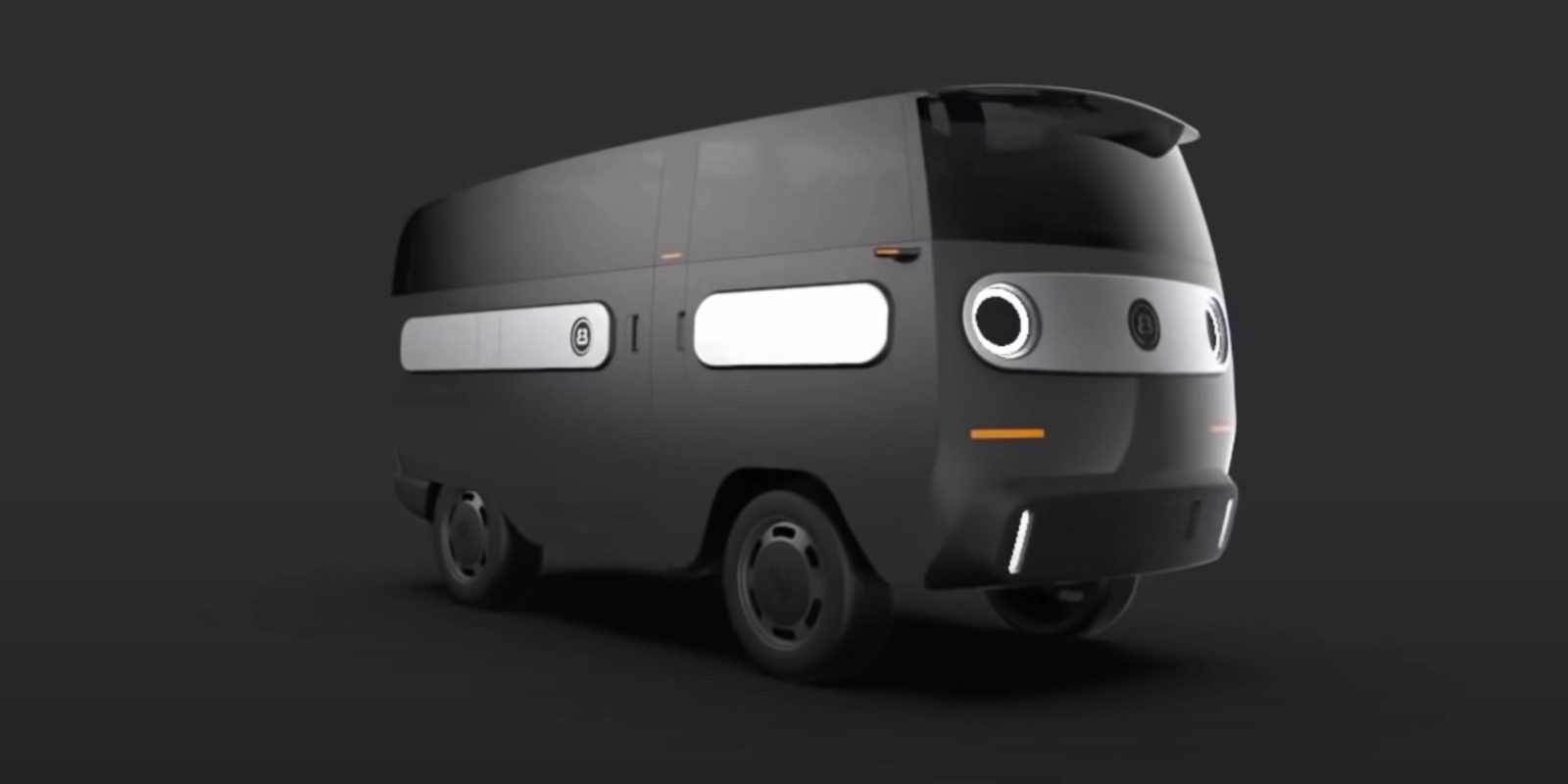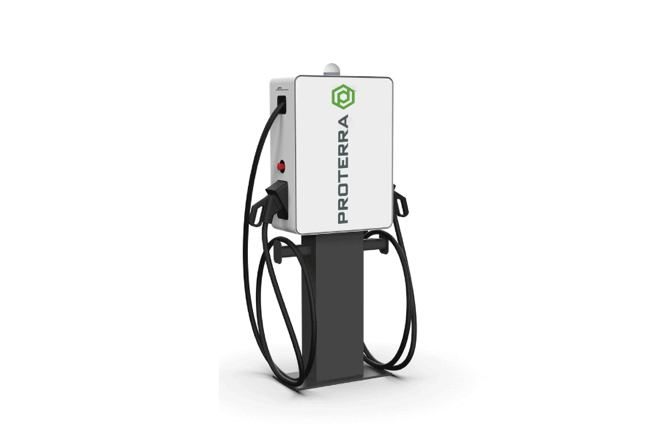Sales volumes for the electric hatchback will probably not help.
Source: Electric Vehicle News
Electric Vehicle News
Electric MINI Cooper SE Celebrates 'The Flash' Superhero
MINI explains why it chose to promote the DC Comics character, arguing there are parallels between the superhero and the MINI brand.
Source: Electric Vehicle News
Tesla To Get Faster-Charging Energy-Dense Battery Cells From Panasonic
Panasonic has already started converting production lines at Tesla’s Gigafactory 1 to produce the new, improved cells.
Source: Electric Vehicle News
[Update] Where key swing state Pennsylvania stands on energy

Pennsylvania is a crucial swing state in the US election, so it’s being closely watched and polled. Here’s where it stands on both fossil fuels and renewables.
The post [Update] Where key swing state Pennsylvania stands on energy appeared first on Electrek.
Source: Charge Forward
Here’s a new $32,000 electric camper and we are highly skeptical

A new $32,000 electric camper is getting some hype this week, but we are highly skeptical about the vehicle. Is it a scam?
The post Here’s a new $32,000 electric camper and we are highly skeptical appeared first on Electrek.
Source: Charge Forward
EGEB: Oil and gas giant Equinor pledges to become net zero
In today’s Electrek Green Energy Brief (EGEB):
- Equinor is the latest European fossil-fuel giant to announce a new net zero emissions goal.
- The US quits the Paris Agreement tomorrow — here’s what happens next.
- Convenience-store chain Wawa hosts an EV parade in Virginia — and gives away a Tesla Model 3 lease.
- Arcadia Power is committed to making clean energy work for the planet and Americans’ bank accounts — all without changing your utility company. Sign up to receive your $20 Amazon Gift Card — *ad.
The post EGEB: Oil and gas giant Equinor pledges to become net zero appeared first on Electrek.
Source: Charge Forward
VW: German auto industry push to subsidize hydrogen is “nonsensical”
The latest battle in the War of the Energy Storage Media has broken out in Germany, where the Volkswagen Group and an auto industry lobbying group (the German Association of the Automotive Industry, or VDA) are at daggers drawn over the government’s proposed plan to implement the EU’s renewable energy directive.
Germany’s Federal Ministry of the Environment (BMU) has proposed a plan to establish a market in renewable energy credits for transport, modeled on a similar plan in France and existing electricity credit markets in the Netherlands and California. The market would allow competition among electricity, biofuels and hydrogen as green transport fuels. The plan also includes a 2% e-fuels mandate for aviation, to be met by 2030. (The term e-fuel, or electrofuel, refers to hydrogen and other synthetic fuels such as butanol and biodiesel. Some foresee that excess renewable energy could be used to generate green hydrogen and/or synthetic fuels, to be used in industrial processes and/or heavy-duty vehicles.)
The VDA rejected the BMU’s plan, calling instead for hydrogen and e-fuels to be mandated for road transport. The VDA said it wants to see a much higher usage of hydrogen and synthetic fuels than envisaged in the BMU’s proposal, and that it foresees the use of hydrogen “in all transport applications.”
The VDA’s biggest member, Volkswagen, rejected the VDA’s rejection, and called the use of hydrogen in cars and trucks “nonsensical.” “The so-called potential of these alternatives for liquid fuels is…massively overestimated,” said VW, adding that the production of synthetic fuels from surplus renewable energy would be “complex, cost-intensive [and] not very climate-efficient.”
To an outsider, the split between VW and the VDA seems puzzling. Two of Germany’s three major automakers have already foresworn the use of hydrogen in cars. In March, Volkswagen explained in detail why it decided that batteries are a superior solution for passenger cars. Daimler has ended its development of fuel cell-powered passenger cars, but continues to develop fuel cells for applications in heavy-duty vehicles. BMW continues to research fuel cells.
VDA members include not only the grosse drei German automakers, but also international component suppliers and foreign-owned carmakers such as Opel.
Jekaterina Boening, Senior Policy Manager at Transport & Environment, said, “The VDA is living in a fantasy world and has just been called out by its biggest member. Its proposals for massive amounts of hydrogen and e-fuels to be used by cars and trucks are nonsensical indeed. It won’t happen, and is simply meant to confuse politicians. The government needs to call their bluff. Pie-in-the-sky e-fuel schemes aren’t going to make the electric car revolution go away.”
Auto industry consultant James Carter weighed in on VW’s side. “Even if hydrogen retail pricing was to drop by 80%, it still can’t compete with EVs, and a green H2-powered car will always use 3x more energy and create 3x more emissions than an EV off the same grid,” he wrote in a LinkedIn post. “What’s more, no company is taking the lead with funding H2 fueling infrastructure the way Tesla did [with] EV charging.”
In an earlier post, Carter posited that, as 96% of current hydrogen is made from fossil fuels (grey hydrogen and blue hydrogen), it should actually be considered a form of fossil fuel. Hydrogen opponents tend to argue that the push to use hydrogen in vehicles is fueled by politics and the interests of the oil industry. “Let’s just follow the science and continue to use hydrogen where it is needed most—in industrial processes, well away from anything with wheels,” writes Carter.
Less controversially, the BMU’s proposal would end incentives for the use of biodiesel made from palm oil by 2026—four years ahead of the EU’s phase-out date. Parliaments in Denmark, France and Italy recently made similar moves toward ending subsidies for biofuels made from palm and soy. According to the EU Commission, biodiesel made from soy is two times worse for the climate than regular diesel, and palm oil is three times worse, when indirect emissions are accounted for. Palm oil is also a major driver of tropical deforestation.
Source: Transport & Environment
Source: Electric Vehicles Magazine
Proterra unveils high-power charging solutions for large-scale fleets
Heavy-duty EV builder Proterra has unveiled a new, high-power charging solution designed to facilitate the electrification of large-scale vehicle fleets. Developed in partnership with power systems design specialist Power Electronics, the new charging system offers transit agencies and fleet operators a customizable vehicle charging solution.
The new Proterra Energy charging systems can be configured at a broad range of power levels. For large fleets of vehicles, which need to charge dozens or hundreds of vehicles in a single fleet yard, the new systems can be configured with up to 1.5 megawatts to power up to 20 vehicles simultaneously. This fleet-scale charging system can tie directly into higher-voltage utility power lines (up to 35 kV), avoiding the footprint and complication of costly switchgear.

Smaller EV fleets can choose systems with 75-, 150-, 250- and 500-kilowatt power levels.
The new chargers use interoperable, universal charging technology, and are equipped to power any and all types of EVs. They are available in both overhead and plug-in formats. They feature bi-directional power flow, making them smart-grid-ready for vehicle-to-grid applications.
All Proterra systems can incorporate multi-dispensers, which can reduce the overall space, cost, and aggregate power levels needed by a fleet yard. When coupled with the 1.5-megawatt charging system, the multi-dispenser capability enables up to 40 vehicles to charge sequentially, one after the other, at full power.
Leveraging Power Electronics’ technology, the new chargers have the capability to interconnect with stationary storage and solar panels to provide fleet operators with a clean, resilient source of power for their vehicles.
Source: Proterra
Source: Electric Vehicles Magazine
Ford Delays Escape PHEV Production To Next Year To Resolve Battery Issue
Ford tells us it’s working with the battery cell supplier to resolve a quality issue.
Source: Electric Vehicle News
IONITY Reveals Network Usage Over The Past 2 Years
The lockdown translated into deep dip. Hopefully it will not repeat in the winter.
Source: Electric Vehicle News



